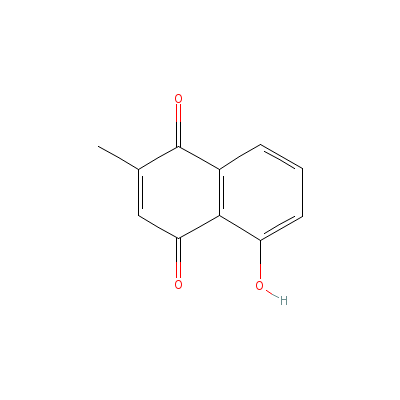| |
|
|
Botanical Name |
: |
Plumbago zeylanica L. |
English
Name |
: |
White Leadwort |
Family |
: |
Plumbaginaceae |
| |
General Info
| Description |
 |
|
A perennial herb 1.5 m tall. Leaves thin glabrous 4 to 16 cm long and 2.0 to 7.5 cm wide, ovate apex subacute, margins entire, base tapering into amplexicaul petiole, auricles present. Flowers white, borne in elongated spikes up to 30 cm long; sepals green, persistent with membranous margins, corolla tube less than 2.2 cm long, petals 6 to 7 cm long, obovate. Fruit capsule, oblong, sharply pointed with furrows, enclosed with persistent calyx. |
| Herb Effects |
 |
|
Antiperiodic, stimulant, sudorific, stomachic, carminative, astringent, anthelmintic, laxative, expectorant, tonic, alterative, abortifacient, and alexipharmic. |
Chemistry
| Active Ingredients |
 |
|
Plumbagin |
| Chemistry
of Active Ingredients |
 |
|
|
 |
Name |
CAS# |
IUPAC Name |
Formula |
Structure |
 |
|
| Plumbagin |
Not Available |
5-hydroxy-2-methyl-n
aphthalene-1,4-dione |
C11H8O3 |

|
|
Pharmacology
| Medicinal Use |
 |
|
For dyspepsia, piles, anasarca, diarrhea, skin disease, obstinate skin diseases, ulcers, for treating laryngitis, rheumatism, diseases of the spleen, ring worm, scabies. The root of the herb is used in cases of enlarged spleen, helps improve digestion and it stimulates the appetite. |
| Contraindication |
 |
|
It causes abortion. Large doses cause death from respiratory failure. |
Dealers
Products
|
|
|
|
|